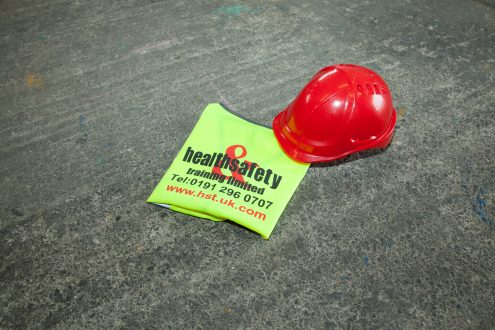Beware of Falling Materials at Construction Sites
Employers have a duty of care to protect members of the public, as well as their own staff and other workers who may be sharing the job site.
One of the biggest risks on construction sites where work is being carried out at height is the potential for falling objects, such as tools, equipment and materials, to hit passers-by and nearby workers. As an employer you must take steps to ensure this risk is at least reduced, or eliminated completely when possible.
Steps to prevent falling object injuries
One of the main reasons for accidents as a result of falling objects is insufficient planning and supervision. Every task completed at height should have a risk assessment or lifting plan carried out that will identify any potential risks, either to those carrying out the operation or those in the surrounding areas.
Once these risks have been identified, steps can be taken to reduce or eliminate them for a safer working environment.
Clear warnings
If it is likely that falling objects could present a hazard on your site, this should be clearly communicated to employees, visitors and any passers-by that may be at risk. Warning signage should be installed in any areas where the risk is present and exclusion zones should be put into effect in particularly dangerous areas.
Securing loads
If a load needs to be elevated using mechanical equipment, such as a forklift, then it should be properly secured. For example, palletised stock should be wrapped in plastic to offer more stability to the load and prevent any loose objects falling from the pallet.
Moving loads
If a load needs to be moved from height, or transported at height, it is essential that anyone working below it is safely moved away. An exclusion zone should be set up and spotters should be used to stop pedestrians from entering any areas where a falling object could present a risk. Whenever possible, stacking, lifting and general high level movement of heavy loads should be undertaken in quiet hours.
Cleaning up
Tools and rubbish are some of the most common objects that cause injuries when left loose. To reduce this type of hazard, all loose debris and materials should be secured or removed from workplaces at height (such as scissor lift platforms), and employees should be encouraged to keep work areas clear and tidy.
Fitting barriers
Installing physical barriers to hazardous areas at height, such as safety netting below work areas and boards on scaffold, that will stop or catch falling tools, materials and equipment. This is a sensible proactive step to reduce the likelihood of accidents and injuries.
Personal Protective Equipment
The last line of defence against falling objects is personal protective equipment (PPE). A hard hat and steel toe-capped shoes can be invaluable to workers in at-risk areas. It is the employer’s responsibility to provide adequate PPE to all workers. It should also be inspected by the employee before every use, and any concerns should be reported immediately and the equipment should not be used until it has been repaired.
The Consequences
The risk presented by falling objects can range from concussion to death, so if a company working at height is found to not be providing adequate protection for staff, passers-by and other workers, they can be prosecuted by the Health and Safety Executive.
In January 2016, a plumbing and heating company from Warrington were prosecuted and fined following an accident that resulted in serious injuries to an employee who was struck by a falling steel framework.
The court heard how the steel framework had fallen from a forklift and injured the employee’s head and leg. The HSE investigated and found the accident had occurred because of poor planning and supervision, and that it was the result of an insufficient or unsuitable risk assessment, method statement or lifting plan.
The company were found to be in breach of Section 2(1) of the Health and Safety at Work etc. Act 1974, and received a fine of £5,000, and were also ordered to pay costs of £919.
Health and Safety Training Ltd
The team at Health and Safety Training Ltd specialise in providing training for businesses and employees throughout the North East. We offer a range of courses including risk assessment training that will help to keep your workplace safe and running smoothly.
To find out more, or for advice on limiting the risk of falling materials on your construction site, simply get in touch today.
What are the different types of Mobile Elevated Working Platforms (MEWPs) How to Avoid Corporate Manslaughter





